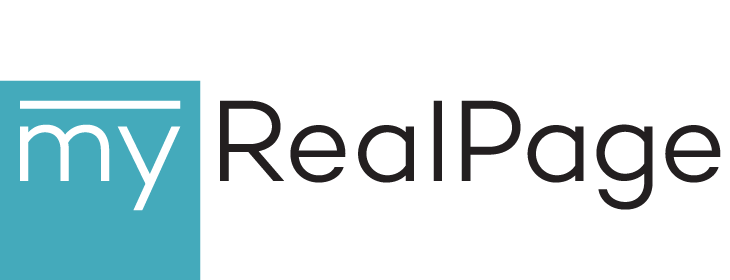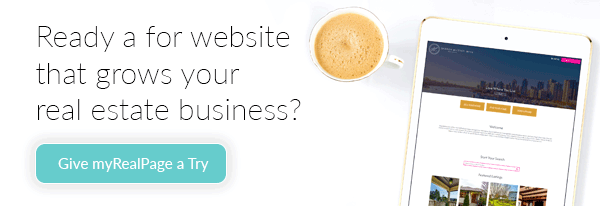Real Estate Newsletter: How to Create One That Actually Converts

If you think email newsletters are outdated, think again. In real estate, where relationships and timing matter most, a well-crafted newsletter is one of the most effective (and underutilized) tools in your marketing toolkit. At myRealPage, we’ve helped thousands of real estate pros convert cold leads into active clients—and we’ve seen just how powerful a newsletter can be when it’s done right.
In this post, I’ll break down what a real estate newsletter is, why it matters, what to include, how often to send it, and the tools that make it easier than ever to hit “send” with confidence.
What Is a Real Estate Newsletter?
A real estate newsletter is a recurring email you send to your database—leads, clients, past clients, and prospects. Think of it as your digital handshake. It helps you stay connected, build authority, and (most importantly) stay top-of-mind until someone’s ready to act.
There are many ways to use your newsletter, including:
- Property updates: New listings, open houses, sold properties
- Market insights: Local price trends, interest rates, forecasts
- Educational tips: Advice for buyers, sellers, and investors
- Community news: Local events, business highlights, and more
Why Real Estate Agents Should Send Newsletters
Still wondering if it’s worth the effort? Here’s why you should hit send:
- Engage leads and past clients: Keep your contacts warm until they’re ready to act
- Build authority: Position yourself as the go-to local expert
- Showcase listings and updates: Highlight what’s new and what’s coming
- Drive traffic: Send readers back to your website, blog, or listings
What to Include in Your Real Estate Newsletter
Here’s what makes newsletters valuable (and clickable):
Market Updates
- Share local insights on price changes, days on market, interest rates
- Be the source they rely on to understand what’s happening
New Listings and Open Houses
- Use images, links, and strong calls-to-action
- Highlight new, price-reduced, or sold homes
Tips and Advice
- Provide helpful content: “Top 5 Mistakes First-Time Buyers Make”
- Keep it short, relevant, and useful
Community Spotlights and Events
- Showcase neighborhoods, restaurants, schools, and local events
- Helps readers envision life in a specific area
Testimonials and Success Stories
- Social proof builds trust: “This agent sold our home in 5 days!”
- Include a short quote and photo when possible
Real Estate Newsletter Ideas for Every Month
Need inspiration? Here’s a seasonal content calendar:
| Month | Newsletter Topic Ideas |
|---|---|
| January | Market Predictions, New Year Home Goals |
| February | Valentine’s Day Appreciation Emails, Winter Home Tips |
| March | Spring Market Prep, Buyer Tips |
| April | Tax-Time Tips, Renovation Advice |
| May | Open House Invites, Moving Tips |
| June | Summer Events, Vacation Rental Insights |
| July | Home Staging Tips, Mid-Year Market Recap |
| August | Back-to-School Advice, Investment Opportunities |
| September | Fall Maintenance Checklists, Seller Tips |
| October | Halloween Themes, Mortgage Insights |
| November | Thank-You Emails, Year-End Market Prep |
| December | Holiday Appreciation Emails, What to Expect Next Year |
For even more ideas, check out our guide: “The Best Newsletter Ideas for Real Estate Agents“
Tools to Build and Send Real Estate Newsletters
Whether you’re new to email marketing or looking to streamline your process, here are some great tools:
- Mailchimp: Beginner-friendly with simple templates
- ActiveCampaign: More advanced segmentation and automations
- Constant Contact: Good for drag-and-drop editing
Look for a tool that works with your CRM and website.
Best Practices for Higher Engagement and Conversions
Want your newsletter to actually get opened (and clicked)? Follow these tips:
- Write compelling subject lines: Clear > clever. Try “Just Listed in [Neighborhood]” or “Market Update: What You Need to Know.”
- Keep it mobile-friendly: Over 50% of emails are opened on phones
- Use calls-to-action: Tell people what to do next (“View Listing,” “Contact Me”)
- A/B test when possible: Try different subject lines or content blocks to learn what works
- Send consistently: Bi-weekly or monthly works best for most agents
Common Mistakes to Avoid
Even a good newsletter can flop if you:
- Sound too salesy: Focus on providing value, not just self-promotion
- Don’t segment your list: First-time buyers and past sellers don’t want the same content
- Send info overload: Keep it simple, skimmable, and engaging
How to Get More People to Subscribe
The more people on your list, the more potential clients you can convert. Here’s how to grow it:
- Add forms to your site: Every listing page, blog post, and homepage should have an opt-in
- Offer lead magnets: Free guides (“10 Tips for First-Time Buyers in X neighbourhood”) in exchange for email
- Promote on social: Share bits and pieces of your newsletter on social media and and add signup links if they want to learn more
More Opens, More Clicks: Tips For Better Real Estate Email Newsletters
Real estate email newsletters can be a powerful marketing tool for building a pipeline of leads, developing trust and strengthening your reputation.
But they take time and work to produce. If you’re going to make the effort, then the newsletter needs to deliver.
If you’re struggling to see results from your real estate email marketing, it’s time to hit the reset button.
For more opens and more clicks, try these tips for better real estate email newsletters.
Set Expectations (and Deliver)
When we don’t get what we signed up for, we usually back out.
We also back out when we sign up for something not knowing what we’re in for — and then discover we don’t like what we’re given.
This applies to memberships, jobs, software, relationships, and yes, newsletters.
If you’re seeing a high rate of unsubscribes, it’s time to revisit the point of sign-up.
Take a look at the newsletter sign-up page on your real estate website. That custom website page should give potential subscribers a clear understanding of your real estate email newsletter: why they should be interested, what it will include and how often they will receive it.
Some sign-up pages even offer a look at a previous newsletter, so subscribers can gauge whether the content is of interest.
Then, of course, you need to fulfill the promises made. Your newsletter should contain the kind of content you described, and it should arrive at the frequency you outlined.
Not providing enough information about your newsletter at the time of sign-up can cause low sign-ups. A mismatch between expectations and reality can be the cause of unsubscribes.
More Value, Less Promotion
Yes, a real estate email newsletter is a marketing tool. But it’s not an advertisement.
It’s a form of content marketing — content that doesn’t explicitly promote something but instead stimulates interest in the product or service behind the content.
If your newsletter is constantly spewing your sales stats and testimonials, it’s time to scale back and revisit the balance of valuable versus promotional content. The most effective newsletters are almost entirely made up of the former.
What is valuable content? It’s “news you can use.” In other words, information that’s actually useful (or inspiring, interesting, funny or otherwise engaging) to your recipients.
Examples of valuable content for real estate email newsletters include:
- Listings, especially sneak peeks or “best of the week” listings;
- Educational content on your real estate blog (e.g., tips for buyers and sellers and neighbourhood guides);
- Sold data;
- Market statistics, with context;
- Community events, updates and reminders (e.g., special garbage pickup dates, festivals and road closures);
- Local business news and spotlights; and
- Discounts, freebies and giveaways.
A mix of the above content should form the bulk of your newsletter.
Simplify Content and Design
It’s tempting to load up your newsletter with content and dress it up with snazzy graphics.
Don’t do it. Contrary to what you might think, simpler is better.
Visual overwhelm discourages recipients from actually engaging with the email once they’ve opened it. When the design is simple — plenty of white space, uncluttered layouts and a balance of imagery and text — recipients are more inclined to read.
To get set up for success, you might want to consider hiring a designer to create a few templates for you to work from.
Similarly, if you pack your real estate email newsletter with too much content, recipients may be more likely to quickly scan the screen than they are to actually click an article or follow a call-to-action.
Establishing a regular content mix can help you keep each newsletter focused and streamlined. Maybe it’s a bit of introductory copy at the top, followed by a featured blog post, a news article, a listing of the week, a local event listing and a funny Instagram post or real estate meme.
Spend Time on Subject Lines
The importance of subject lines cannot be overstated.
Even if you’ve nailed the first three tips on this list, it can all come undone with an ineffective subject line.
Bad subject lines = fewer opens = fewer clicks = unsuccessful newsletter.
Writing effective real estate subject lines takes research and practice. While there’s not one magic formula, the best subject lines are:
- Pretty short. This is so that they don’t get cut off when someone is looking at their inbox on their phone (which most people do).
- Engaging. They make you curious, they make you laugh, or they offer you something you can’t resist.
- Simple and clear. Complicated jokes, big words, fancy prose, too much mystery… they ruin subject lines. Simple is best.
- Honest. Trying to tempt someone to open an email with an inflated promise or offer is bad practice.
The takeaway here is to spend time writing your subject lines. Research subject line best practices. Try writing several variations for each newsletter. Use subject line testers (there are plenty of free ones) to gauge effectiveness and to preview what a subject line will look like in someone’s inbox.
Pay attention to what types of subject lines get you better results. Analyze each and every subject line you use. More on this next.
Test, Test, Test
Perhaps the most crucial step in creating better real estate email newsletters: test everything.
- Run A/B tests for subject lines
- Try different templates
- Change up your context mix
- Play around with sending your newsletter at different times
- Write different headlines for the same content
- Use different images for the same content
Experimenting and later analyzing and comparing results is key to unlocking newsletter success. You’ll likely start to notice some trends and patterns that you can adopt as best practices.Just don’t rest on your laurels. What works best a few times may not be the case every time — keep a close eye on your results (open rate, click-through rate, etcetera) after every deployment.
Content Ideas To Write an Engaging Real Estate Newsletter
Writing your monthly newsletter doesn’t have to be a drag…
Just pick a few ideas from the list below and spend about 30 minutes or less writing it.
Keeping your newsletter short and punchy will take the “heavy” writing burden off you, and it respects your clients’ time.
You could even partner up with an expert in your industry and have them share valuable tips for homeowners and potential buyers. You won’t have to do the writing, and they get exposure to your email list. Talk about a win-win situation!
Keep reading for four fresh content ideas you could use in your next real estate newsletter.
1. Provide Local Real Estate Statistics for Your Region
You get the data sent to you by your local real estate board, so why not repackage it for your newsletter? Each month, when you review the statistics, jot down a couple sentences to summarize. Save your notes in a Word document or in the Notes section of your phone, so you don’t need to review the data twice.
People love to know the average cost of homes in their city, whether things are heating up or cooling down, and what’s on the horizon for the next month. This is especially true for people who are considering buying or selling in the near future.
You can take the market insights from TREB or VREB, for example, and comment on what the graphs mean. You can also use our monthly infographics for this purpose. Explain the trends to your clients in terminology that they’ll understand.
Not only does this paint you as a trustworthy professional, but you’re also saving them the time of having to do this research themselves.
2. Collaborate with a Mortgage Expert for Content
You’ve got a network of experts that you refer your clients to (and vice versa), so tap into that for content. Hit up your mortgage expert contact and ask them if they’d be willing to write a simple how-to article for your newsletter.
They’ll be able to create a short write-up for you, and you won’t need to do all the research yourself. Here are a few examples of what they could share on:
- What paperwork should you bring to your first mortgage meeting?
- How do you estimate your bi-weekly payments on your new mortgage?
- Should you visit a bank to get a mortgage or contact a broker?
In return, they’ll get a link in your newsletter to their website or social media account so that your email contacts can easily get in touch with them.
You’d recommend them to your clients in person, so why not share the love in your newsletter too?
Bonus Tip: You could ask for a collaboration with a home inspector, insurance broker, or even a home stager.
3. Share Weird and Wonderful Listings in Your Town
There’s a reason we all loved watching MTV Cribs. Getting an inside look at a celebrity’s house was pretty exciting!
If there are listings in your area that are strange, custom-built, oddly styled, stuck in the past, or on the very pricey side of the spectrum, share them. Perhaps there’s even a backstory as to why the home is the way it is.
People love to look behind the curtain, see how others live, and learn what they paid for their home. Your newsletter can tell that story, providing entertainment to your clients and a bit of insight into what people are asking for their unique residences.
4. Round-up the Best of the Blog
If you’re putting in the time or spending money outsourcing your blog, you want to maximize your investment. Share your blogs on social media to ensure people read them, but also include them in your email newsletter.
Take the first few lines of the blog or an attention-grabbing sentence and use that to entice your subscribers to click on the blog link and read it in full.
You’ll get your written work in front of more people so they can begin to know, like and trust you. But you’ll also have more visitors to your real estate website, where they can see current listings that may be of interest to them.
Repurposing blog content makes the most of what you already have, and it streamlines your newsletter creation process.
That way you remain in touch with your email list, but you aren’t spending hours in front of your laptop, when you could be following up with new potential clients.
People Also Ask (And We Answer)
What should be in a real estate newsletter?
Include a mix of property updates, market insights, community content, and tips. Keep it short, helpful, and visually appealing.
How do I make my real estate newsletter interesting?
Use real photos, tell local stories, and write like a human. Always include something valuable your reader can learn or use.
How often should realtors send newsletters?
Aim for bi-weekly or monthly. Too frequent can feel spammy, too infrequent makes people forget you.
How do you write a catchy newsletter?
Start with a clear subject line, use a warm tone, and make your reader feel like you’re speaking directly to them. Add a call-to-action they can’t miss.
Final Thoughts
Newsletters are more than just another email. They’re your chance to build a relationship with your audience before they ever pick up the phone. With the right email marketing strategy, the right content, and the right tools, your newsletter can become your best lead-nurturing channel.
Give it a try—you might be surprised how many of your “cold” contacts warm right up.
Last Updated on October 27, 2025 by myRealPage


